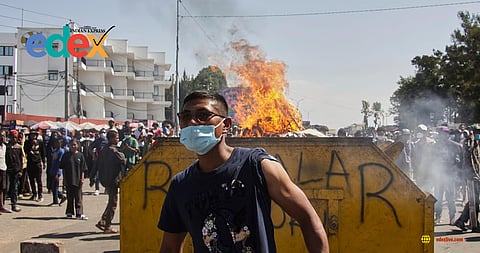

On Thursday, October 9, approximately 1,000 protesters marched through Madagascar’s capital, Antananarivo, engaging in clashes with police who deployed tear gas and stun grenades to disperse the crowds.
The unrest, now in its third week, marks the most significant turmoil in the Indian Ocean island nation in years. Police patrolled the streets in armoured vehicles and charged at masked protesters, particularly in the Anosy and Mahamasina districts near the Mahamasina Municipal Stadium, where demonstrators barricaded streets with rocks and burning tyres. It remains unclear if there were any injuries during the clashes, reported The Associated Press.
Roots of the protests
Led by the group “Gen Z Madagascar,” the protests initially erupted due to water and power outages but quickly grew to encompass broader grievances, including allegations of corruption and nepotism.
The United Nations reports that the demonstrations have resulted in 22 deaths and dozens of injuries, though the government disputes these figures. The unrest reflects deep-seated frustrations in Madagascar, a nation of about 31 million people off Africa’s east coast, where 80% of the population lives in severe poverty, according to the World Bank.
Political fallout
In response to the protests, President Andry Rajoelina, elected in 2018 and reelected in 2023 in a vote boycotted by opposition parties, dismissed his entire Cabinet. However, this move failed to quell the unrest, with young protesters now demanding his resignation. They also rejected an invitation for dialogue with Rajoelina on Wednesday, signalling their determination to push for systemic change.
Protest symbols and inspiration
The protest movement, which has mobilised largely through online platforms, draws inspiration from youth-led uprisings in Nepal and Sri Lanka that toppled governments. A prominent symbol of the demonstrations is a pirate skull and crossbones, also seen in Nepal’s recent protests and other global movements. Authorities have reported instances of looting during the demonstrations, adding to the complexity of the unrest.
Government response
To curb the protests, authorities banned vehicles from Democracy Square in the Ambohijatovo district and surrounding areas, with police maintaining a strong presence to monitor the situation. Madagascar’s history of political crises, with several leaders ousted in uprisings since gaining independence from France in 1960, underscores the significance of the current wave of protests.
